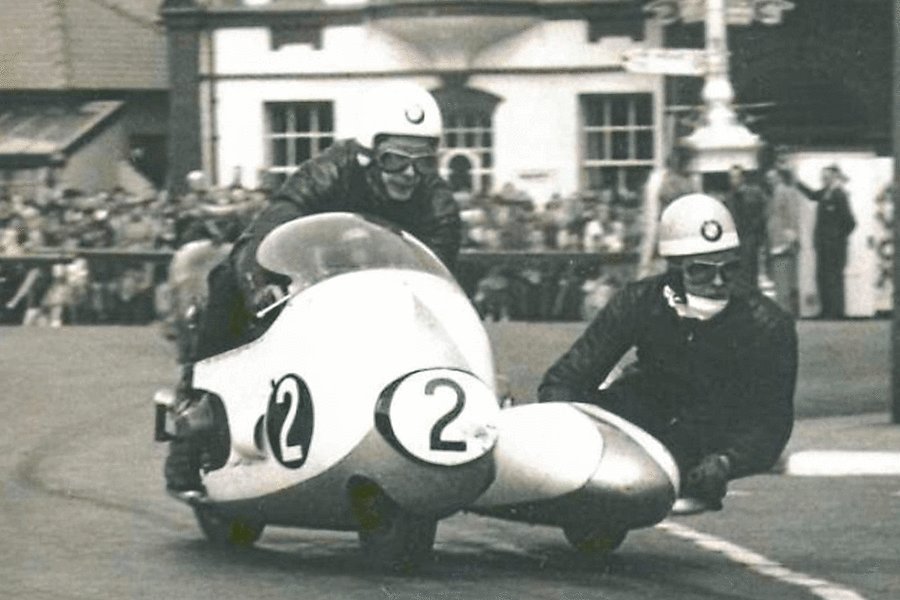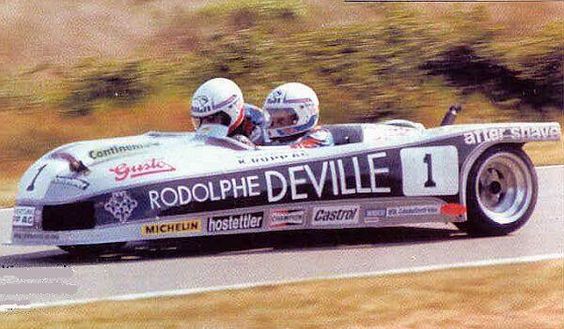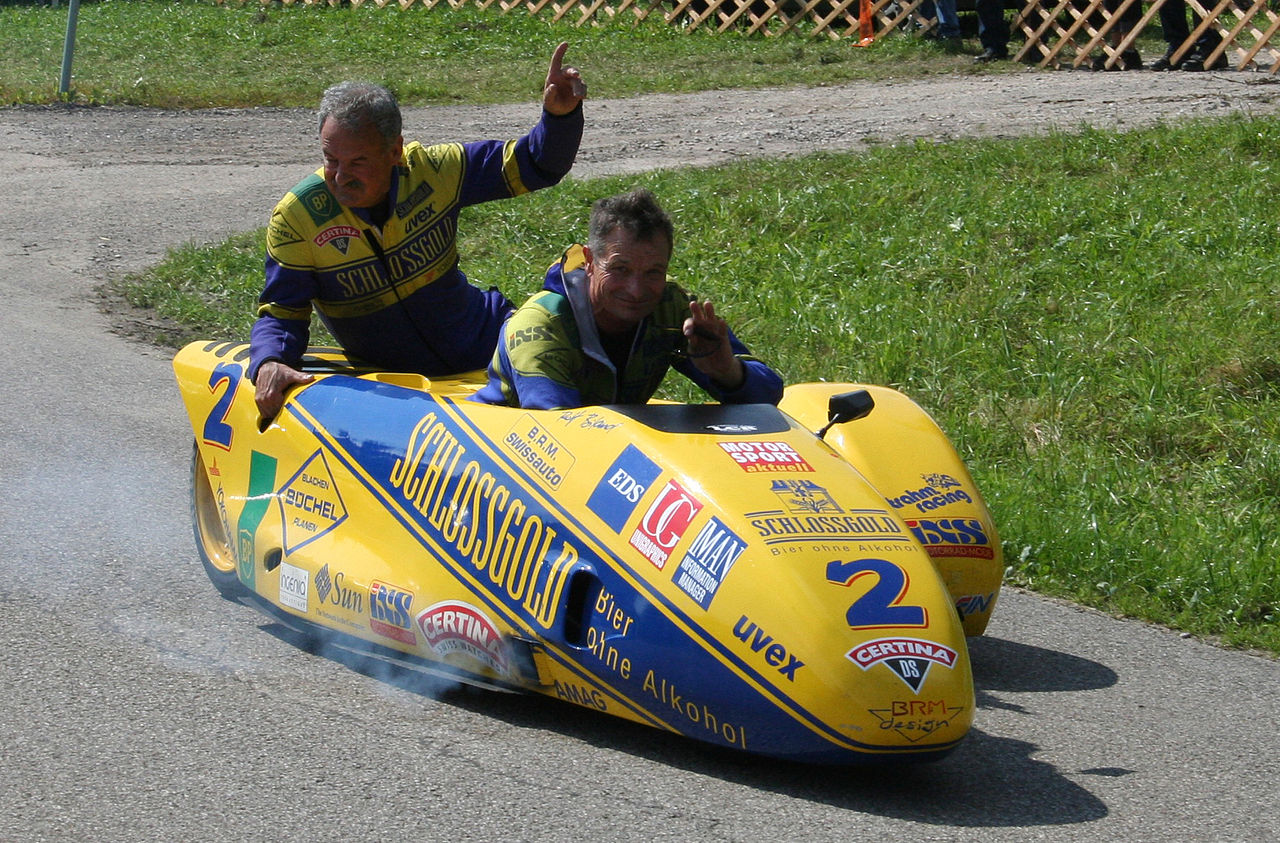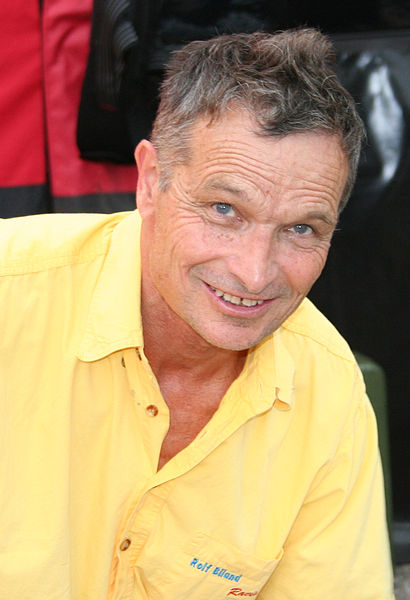Motorcycle Hero: Rolf Biland
24 hours a day sidecar
What do Giacomo Agostini, Valentino Rossi and Ángel Nieto all have in common? They're the only riders who have managed to rack up more race wins during their World Championship careers than Rolf Biland. And when it comes to sidecar races in particular, only British racer Steve Webster has managed to win more championships. With seven FIM Sidecar World Championships and 80 Grand Prix wins, Rolf Biland is the most successful Swiss racer of all time, and here is his story.
Born on April 1st, 1951 in Switzerland, Rolf Biland made his first début in the racing world at the age of 20, as a passenger. He raced in his first Grand Prix just three years later (1974). From the start, Biland would be a force to reckon with. But he would not only be a force in the races. He would also become a force that pioneered change in sidecar manufacturing, and thus sidecar racing itself. And this innovation is what Biland became notorious for.
'I lived 24 hours a day sidecar.'
Sidecars that were used in racing had, until the 70s, been similar to those used on the road: they had the same traditional outfits, but with lowered suspension. This would soon change now that Biland was on the scene. His interest in the aerodynamics of sidecars led him to experiment with sidecar outfits, and, with the help of Swiss sidecar manufacturer, Louis Christen (of Louis Christen Racing), Biland was able to bring to the fore modern sidecar trends which would impact the championship considerably.

Sidecar racing pre-1970s
Such trends included the use of monocoque chassis, which helped to support the sidecars' loads, and the use of car-type suspension. Sidecars began sporting popular Seymaz outfits, where the motorcycle and the sidecars' frames would be one piece– supplanting the tradition of sidecars having their own frame, and being separate from the bike.
Sidecar racer George O'Dell won the 1977 World Championship using the Seymaz and its technologically advanced hub-centre steering. The following year, Biland won the championship for the first time, with Kenny Williams beside him, using a sidecar called BEO: a rear-engined, rear-driven trike. The BEO required no participation from the passenger; sidecar racing was most definitely changing. These technical innovations were new in the FIM Sidecar World Championship, and pushed FIM into altering the rules to accommodate the modern sidecars. In 1979, FIM split the championship in two: one for traditional sidecars (B2A), and one for modern prototype sidecars (B2B).

BEO sidecar
'I think I can win.'
Biland had only been on the scene a few years, but he had already achieved so much, and his racing career was on the up. It's been said that he was a confident person – that he believed in his own abilities, and perhaps this helped him. When Biland made his first ever visit to the Isle of Man in 1977, his first request was to be taken round on a lap of the circuit, and he apparently did this completely silently – taking in every bit of it – and ignoring his fellow passengers all the while. Asked shortly after what he thought of it, he simply replied 'I think I can win'. A cocky response, perhaps, for someone who had never even ridden the track before, but he did prove himself that year, and came runner-up in his first TT just two weeks later.
Biland also reportedly once pushed his sidecar across the finishing line, having been so ahead of the others that he had time to get off his bike to do so. A demonstration of cockiness, maybe, but a sure-fire show of his self belief, for sure.

Biland & Waltisperg
'I never had a better passenger.'
Kenny Williams was replaced by Kurt Waltisperg in 1979, and this was with whom Biland saw his most successes, winning six world titles between 1979-1994. Biland admits that his keenness for tinkering with his bikes has probably lost him about four or five world titles; not everything he tried had worked out for the pair, and Waltisperg apparently wasn't always best pleased about this part of Biland's personality. Though Biland had stated of Waltisperg, 'we harmonized super; I never had a better passenger'. The pair worked perfectly together, and, considering that they still do guest appearances together and the occasional track days, they seemingly still do.
In 1980, FIM, still not absolutely sure of where it stood with all this technological development, banned all prototypes for the year. The rising costs of modern advances were proving too much, and the sidecars, which were beginning to look and perform more similarly to racing cars, spread much controversy within the sport, with many fearing it was becoming too disassociated from motorcycling.
Due to the rising pressure from competitors who protested the ban, FIM, in 1981, re-allowed the prototypes, but with new rules: there must be active participation from the passenger, the sidecar must be driven by a single rear wheel and steered by a single front wheel, and the driver must use motorcycle handlebars instead of a steering wheel. All clear attempts at realigning the sport back to the motorcycle sector and distancing it from the car sector which it threatened to become.
Biland continued to work in pioneering the development of sidecars, all the while adhering to these new rules. Later in his career he would use an LCM-BRM sidecar, manufactured by Louis Christen Racing in conjunction with Büchel Renn Motoren, Biland's primary sponsor. Biland and Waltisperg's last world championship was raced in an LCR Swissauto, whose engine Biland was also instrumental in the development of.
'The life around it [the race] was beautiful.'
Biland and his partner retired from racing in 1996. In 1999, Biland became team manager for the Muz 500 team, renaming it Team Biland GP1. Although the team did have a some success at the start, it folded at the end of the year due to a lack of sponsors.
Biland today runs Karting events in Switzerland, and also coaches a junior sidecar team, as well as appearing as a famous face at the occasional event opening.
The rules of sidecar racing have not changed too much since the 1980s. Car-type suspension is now allowed for the front wheel, and sidecars that are outside of the technical rules can now compete, but their scores are not counted officially. Whether Biland changed the sport for the better or not is debatable. That he was one of the best at what he did is undeniable. He wasn't only a winner in his sport, he was a constant innovator who continuously shook things up and set new standards. And this makes Biland our “24 hours a day” sidecar hero.
Rolf Biland Victories
Grand Prix wins: 80
FIM Sidecar World Championships: 6 (1978, 1979 (B2B), 1981, 1983, 1993, 1994)
We hope you've enjoyed reading about Rolf Biland. If you have any comments, share them with us at
[email protected].
Others from the Motorcycle Heroes Series:




